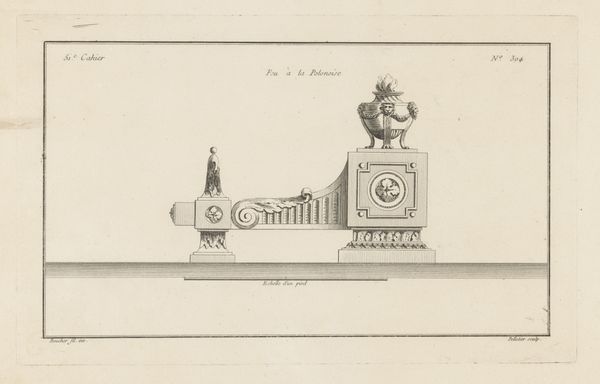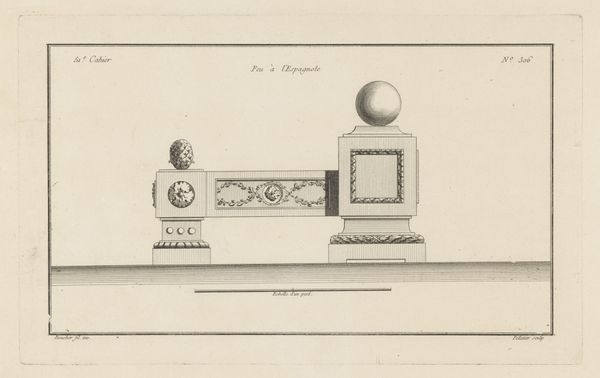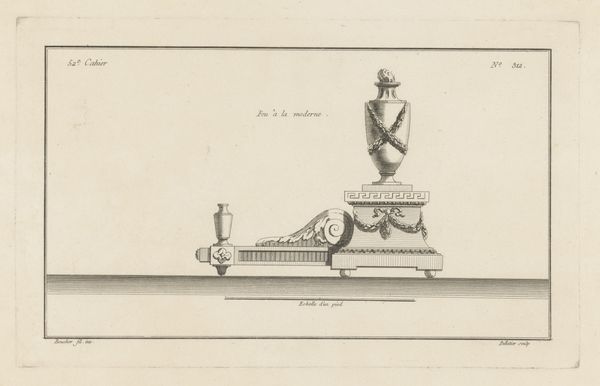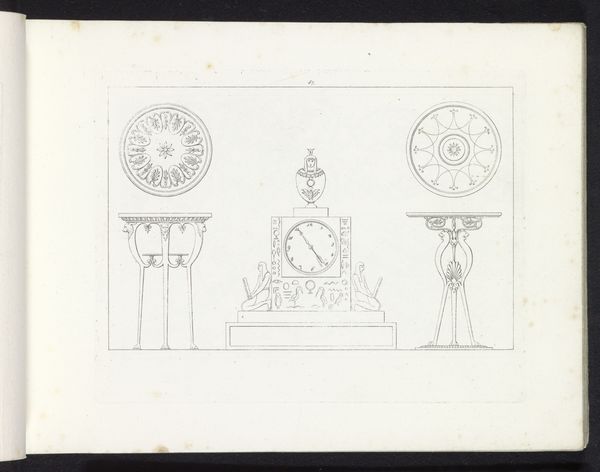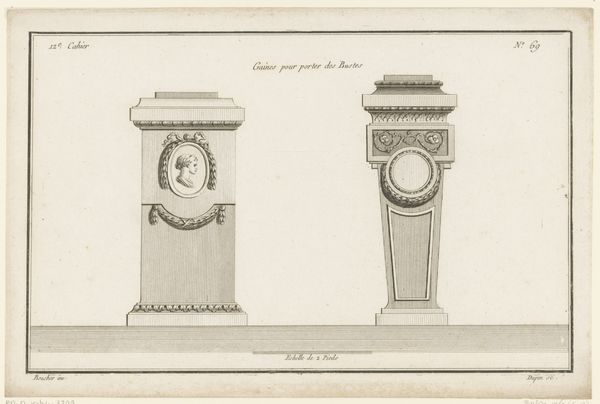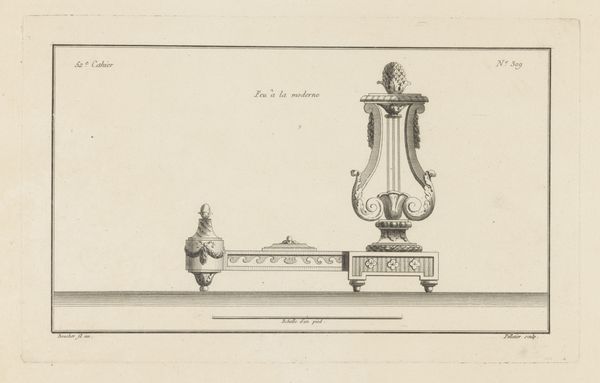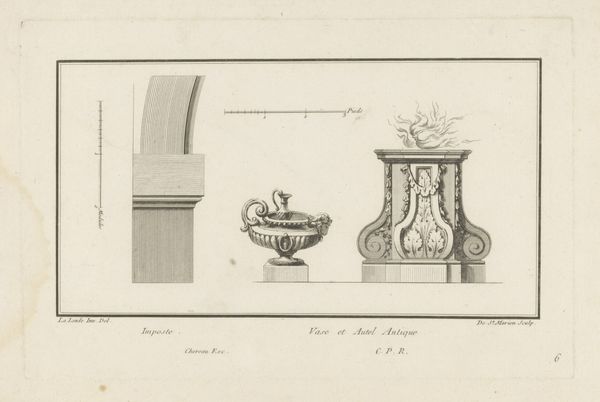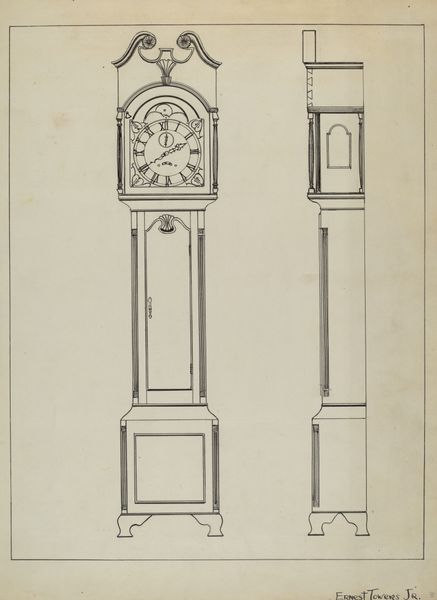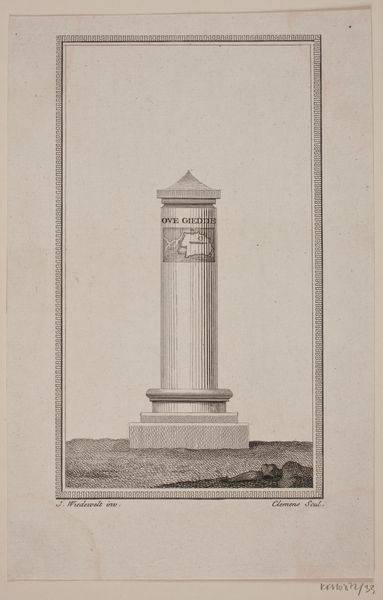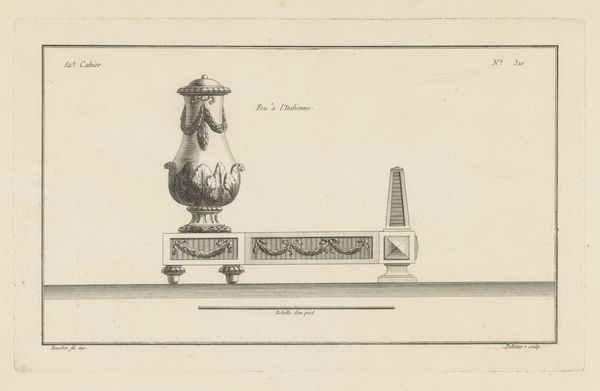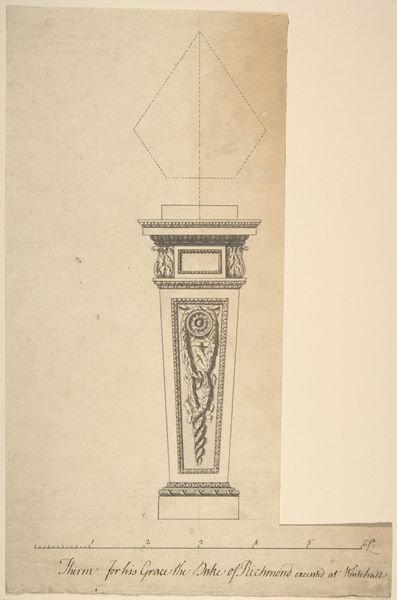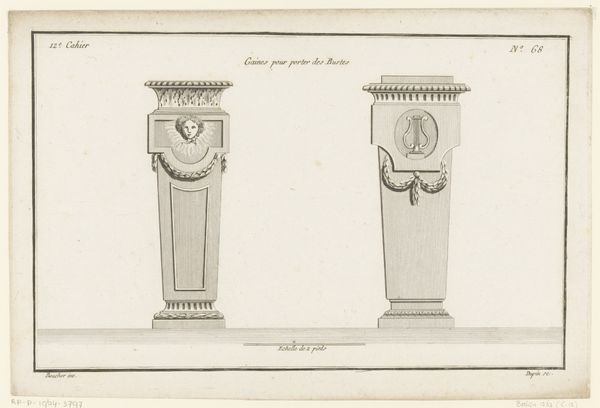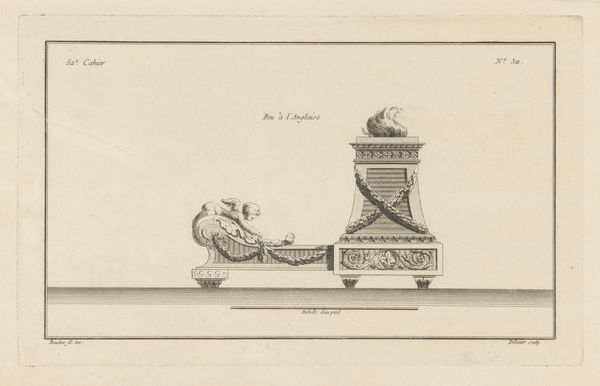
drawing, print, etching, engraving
#
drawing
#
neoclacissism
# print
#
etching
#
geometric
#
line
#
history-painting
#
engraving
Dimensions: height 204 mm, width 330 mm
Copyright: Rijks Museum: Open Domain
Editor: So, here we have Jean Pelletier's "Vuurbok met medaillon en dennenappel," created between 1772 and 1779. It's an etching and engraving of a fire dog. What strikes me is its rigid, almost architectural quality; it looks like a miniature monument. How do you interpret this work, considering the time it was made? Curator: That's a keen observation. Given its Neoclassical style and precise lines, it speaks volumes about the late 18th-century artistic climate. Neoclassicism was more than just an aesthetic preference. It was intrinsically tied to political and social ideals. Think about the resurgence of interest in classical antiquity, driven by Enlightenment thinkers who saw in republican Rome a model for civic virtue and order. How might an object like this fire dog, mass-produced as a print, contribute to disseminating those values? Editor: I guess it presents this vision of order and virtue not just to the elite, who could afford bespoke fireplace furnishings, but to a wider audience via print culture? Curator: Precisely! Prints like this allowed classical motifs to permeate everyday life. Consider the placement of the medallion – it echoes ancient cameos and portraits, but in a domestic context. Do you think this juxtaposition reinforces or complicates ideas about social class at that time? Editor: It’s complicated. On one hand, it's trying to bring refinement to ordinary households, yet the fire dog design itself probably remains the domain of the wealthy, creating almost an aspirational form of cultural consumption. Curator: Exactly. And that tension – the desire to democratize taste versus the persistence of social hierarchies – is what makes this seemingly simple design so compelling from a historical perspective. It reflects a society grappling with its own contradictions. It is important to note that Neoclassicism itself was often employed by powerful, authoritarian regimes to connect to the glory of past cultures and empires. It allows them to display this same glory as a legitimizing function of their power and cultural reach. Editor: This has given me so much more to think about. Thanks for bringing to light what this means, and I will never see fire dogs in the same way again. Curator: A worthwhile investigation and, as always, there is more to find through new perspectives and ideas.
Comments
No comments
Be the first to comment and join the conversation on the ultimate creative platform.
